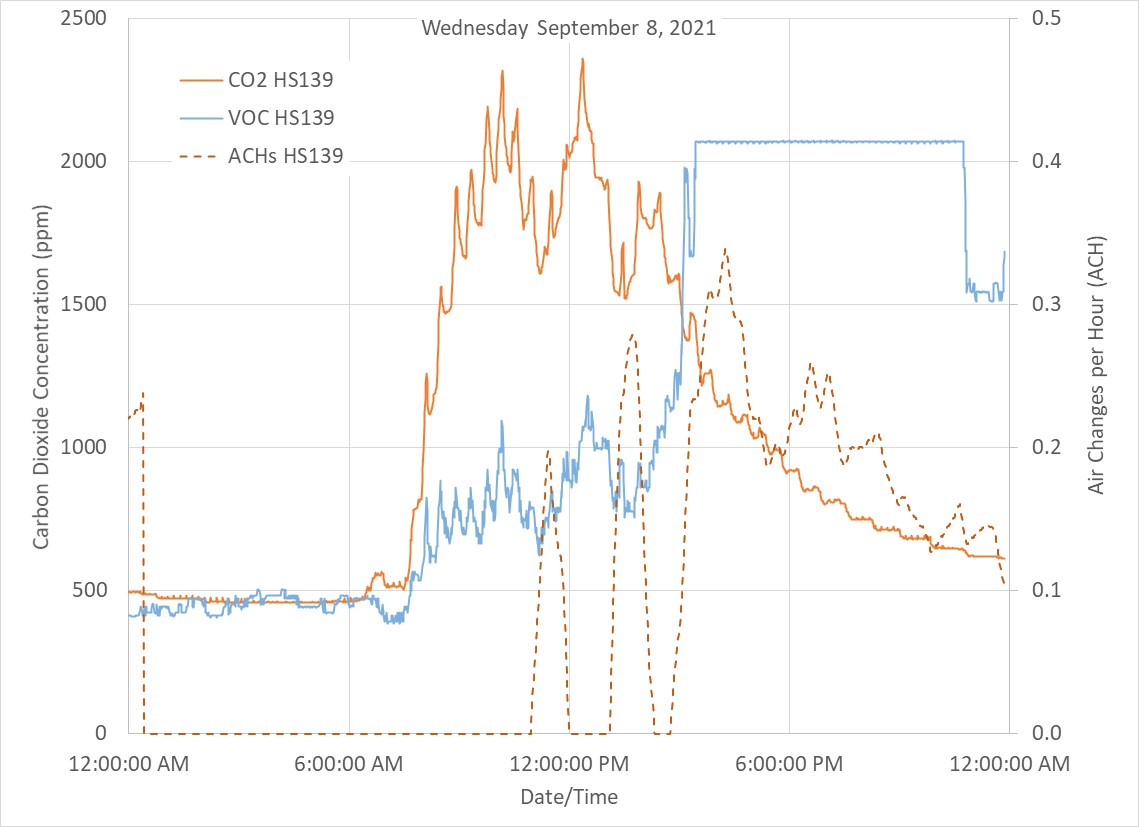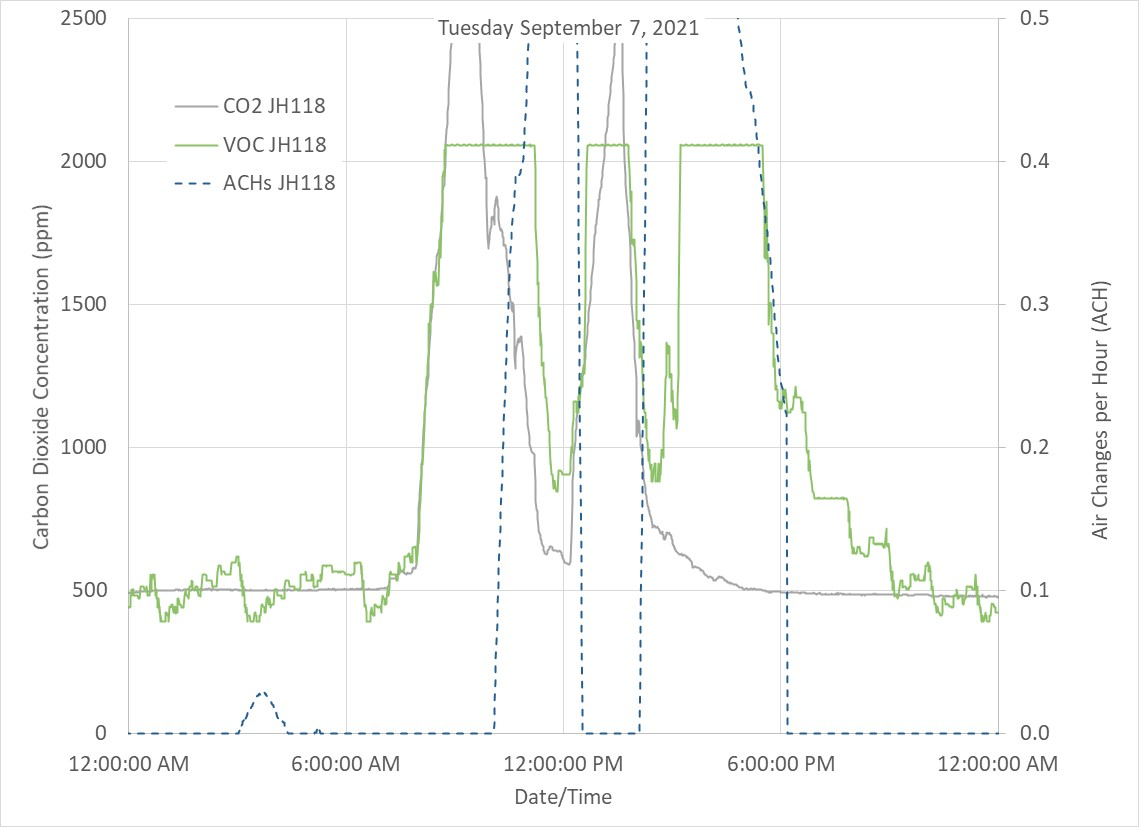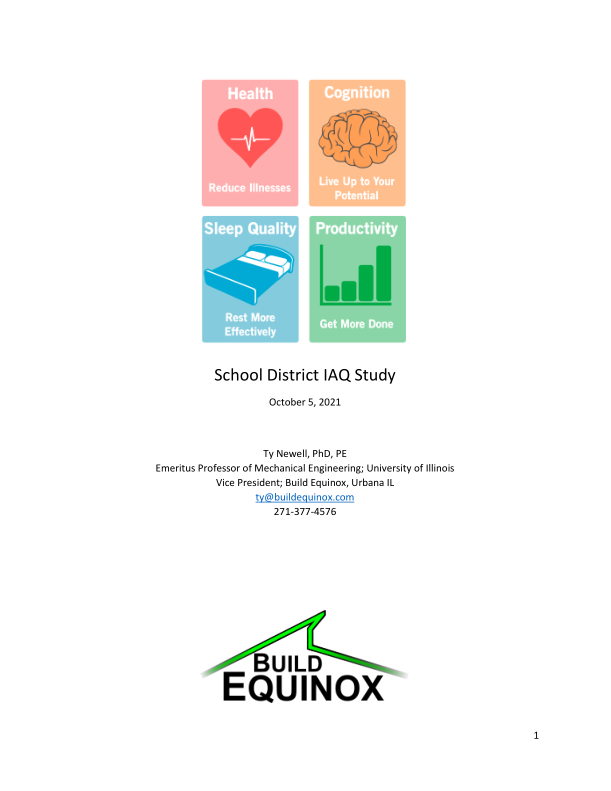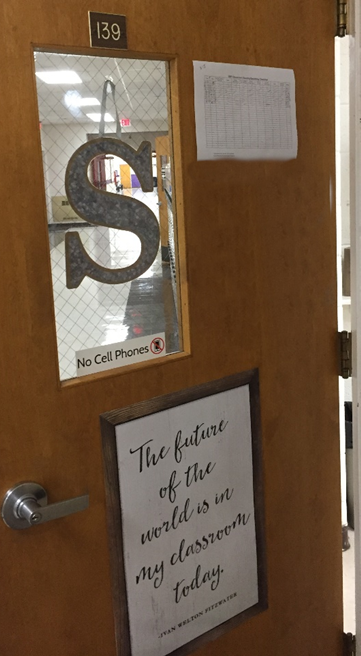Schools are the foundation of a sustainable future. Our teachers pass knowledge to our children so they can learn from our past to create their future. Healthy learning environments are essential for maximizing our children’s learning potentials. Much has been learned in recent years about imperceptible but real effects indoor environments on our cognition and well-being. With today’s technologies, we can create excellent, energy efficient learning environments that minimize facility maintenance expense.
Schools across North America are preparing to invest in school infrastructure as capital becomes available to better protect our school children and staff against the current and future pandemics. But what should be improved and how much will it cost?
A School District in Illinois invited us to investigate their indoor air quality and to discuss methods for improving their indoor environment. The results from our study are posted below.
The School District’s high school, junior high school and elementary school are similar to many North American schools. The high school is modern with central HVAC managing comfort and ventilation.
 Carbon dioxide and total VOCs in a high school classroom. High VOCs after school hours are due to extensive cleaning and disinfection of classroom.
Carbon dioxide and total VOCs in a high school classroom. High VOCs after school hours are due to extensive cleaning and disinfection of classroom.Increased ventilation may be possible by adjusting fan speeds and fresh air damper settings, and perhaps adding energy recovery units coupled with increased fresh air ventilation. The junior high and elementary schools are typical of older schools with radiator heat and window air conditioners. The older two schools are in need of fresh air ventilation and filtered recirculated air.
 Do you think “natural” ventilation is a good solution? This unvented classroom had open windows during our study. Open windows do not ensure good IAQ in rooms, especially rooms with high occupancy such as classrooms. Unfiltered fresh air from open windows are a source of misery for anyone with asthma and allergies.
Do you think “natural” ventilation is a good solution? This unvented classroom had open windows during our study. Open windows do not ensure good IAQ in rooms, especially rooms with high occupancy such as classrooms. Unfiltered fresh air from open windows are a source of misery for anyone with asthma and allergies.In our report, we provide an idea for successively improving each classroom on a room-by-room “rolling renovation” basis. Classrooms, restaurants, houses of worship, yoga studios, and commercial businesses with high occupancy periods require high efficiency over wide occupancy and climatic conditions.
Our example concept incorporates CERV2 technology as the “brains” to seamlessly manage low to high occupancy periods. Three to four ducted or ductless minisplit heat pumps and a commercial energy recovery unit are controlled with the CERV2’s plug-n-play CERV-IR (CERV-Intelligent Relay) technology, providing efficient IAQ and comfort control over a broad range of occupancy and climatic loadings.
An easy-to-use central control dashboard provides Facilities, Administration and Teaching Staff with the ability to monitor and control the air quality, comfort conditions, operation mode of every space in the school from anywhere at anytime. Filter change schedules, online diagnostics, and OTA (Over-the Air) upgrading improves facility management efficiency for additional cost savings. A rolling renovation process does not require schools to be closed, and allows renovations occur at a pace that can be managed by local HVAC businesses, keeping renovation capital within the local community.
We also provide an energy analysis and discuss using the renovation process as an opportunity to transition to fossil fuel free operation. Our analyses indicate that net zero classroom operation is feasible with solar PV array areas much smaller in area than classroom area.
And the most important result…healthier kids and school staff with fewer sick days, improved cognition, and performance, sustainably powered by their daily allowance of solar energy!
Read our report to learn more!

























